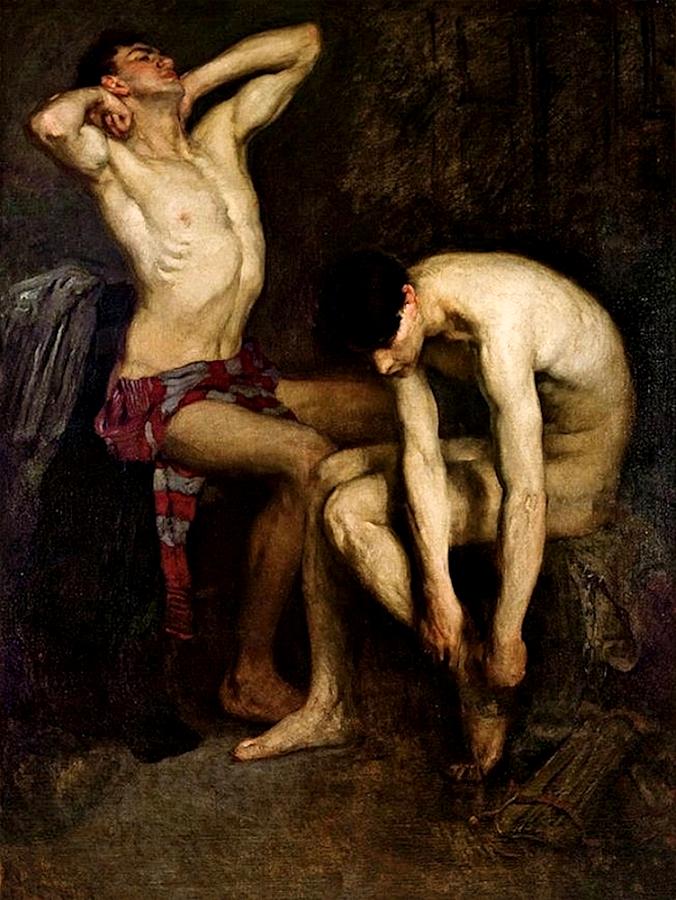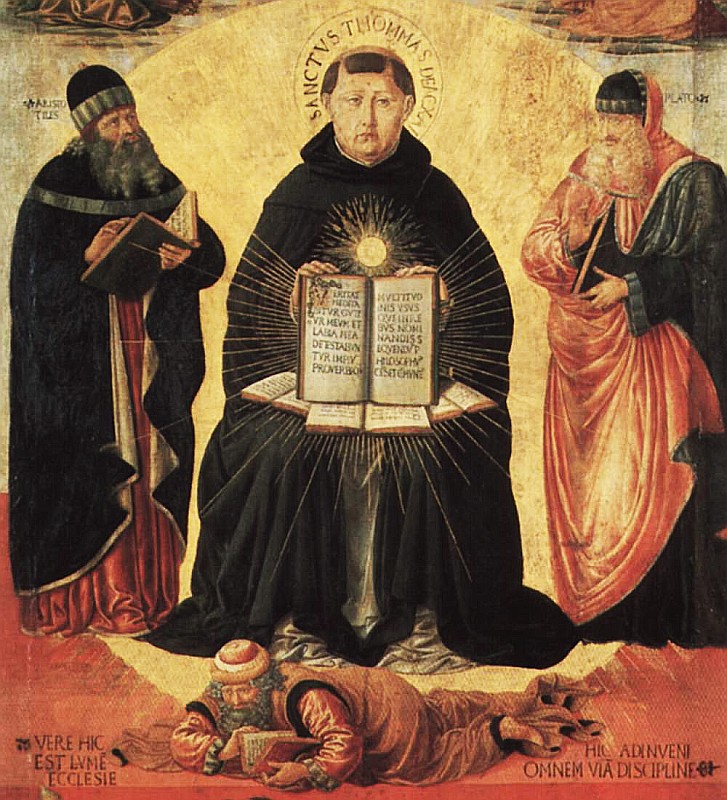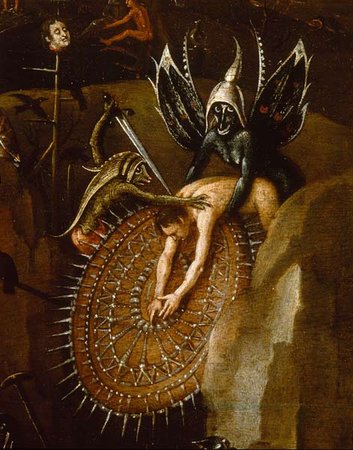
The word sodomy carries a lot of baggage and has a long and colorful etymological, social, and political history—dating all the way back to the biblical cities of Sodom and Gomorrah, both destroyed by God for their wickedness. It has a reputation. While ecclesiastical figures in later centuries associated the term with “clerical sins” of the body, the earliest interpretations of sodomy sprang directly from the Book of Genesis and set the standard for the universal notion of physical depravity. It is misunderstood. Although most people consider a sodomite to be someone who engages in anal sex with another person or non-human animal, the original definition actually referred to an inhospitable person. It is terrifying. Even though the word sodomy has various shades of meaning, it still has the power to shock, frighten, and shame most facets of society. It is symbolic. While historians usually shy away from the subject of sex—leaving its messy discussion to those in the anthropological and sociological realms—the idea of sodomy as a social construct provides a fascinating glimpse at how humans have perceived their bodies, the purpose of sex, and the notion of evil through the ages. It is powerful. For centuries upon centuries, the idea of sodomy has carried with it more judgment than explanation and has provided a platform of persecution for every major religion in the world—and beyond.

To be clear, no moral authority ever openly advocated sodomy. In the Hebrew Bible, the ancient city of Sodom existed some 7,000 years ago—reaching its height during the Bronze Age around 3,000 BCE—in what is now the Jordan Valley. Although described as a fertile and lush “garden of Hashem,” Sodom was a notoriously nasty place fraught with sins like pride, gluttony, and laziness. It was so heinous and morally bankrupt, God had no choice but to completely incinerate it. The fate of Sodom was tied into the biblical story of Lot who was the first mortal man to face the fury of the city’s lustful mob and escape persecution. According to the Bible, two angels secretly dressed as men appeared at Lot’s door one evening looking for a nourishing meal and a safe place to sleep. Lot immediately accepted them into his home without hesitation. But after supper, a large group of townsmen—both young and old—began banging on Lot’s door and yelling for him to hand over the two strangers so they might “know” them better through sodomy.

Museum of Fine Arts, Ghent, Belgium.
While such a bizarre demand makes little sense to the modern mind, the intruders had arrived at the house to harass the strangers and express their disapproval by raping them. Why this was considered even remotely possible or acceptable is a testament to the peculiarity of social norms in the Bible, but it also makes one thing crystal clear—the customs of ancient Sodom were pretty messed up. It was this precise moment of threat that birthed the word sodomy, as wicked men literally wielded their organs against the divine. Instead of simply lynching or beating the visitors, the Sodomites wanted to show off their dominance through the act of sexual humiliation— much like a modern prison rape. In this way, Lot’s protection was the only thing keeping the angels safe, emphasizing the importance of hospitality among strangers. So, essentially the real sin of Sodom was not one of deviant sex but of prideful hostility and a lack of acceptance for those who were different. Ironic, to say the least, given the degree to which sodomy was later used to persecute homosexuals.

Despite the fact that Lot quickly offered up his two virtuous daughters to be gang-raped in place of the visitors, the story painted him as a “righteous man” who had effectively earned the preservation of God. He had protected the honor of the divine—no matter what—and for that, he would be rewarded. Anyone who believed the vile reputation of sodomy began among gays or curious sexual deviants did not recognize the potent role of the aggressive straight male in its history—for it was he who brought it to life.

The lecherous mob was not interested in Lot’s female substitutes and barged violently into the house, looking for the men they sought to rape. But the angels were prepared and struck the intruders down with blindness before revealing their true identity, warning Lot to grab his family and escape. God was about to rain holy hell down on Sodom and destroy everyone and everything inside the city walls, so Lot needed to leave and never look back if he wanted to live. Obedient and terrified, Lot led his women towards the mountains, but his wife was instantly turned into a pillar of salt when she disobeyed instruction and looked behind her shoulder at the home she was leaving forever. Apparently, just glancing in the direction of wickedness was enough to warrant death. Lot continued on with his two daughters to Zoar, where he soon settled in a nearby cave and impregnated them both so as to continue his fine lineage.

While this scenario is likely based more on myth than fact, proof of Sodom’s historical existence and fiery end have been supported by extensive archeological findings. Researchers even believe they have located the exact cave where Lot conducted his incestuous business. It would seem both Abraham from the Bible and the recent Tall el-Hammam Excavation Project would agree— the fortified city of Sodom was clearly devastated by hellfire or the modern equivalent of a massive conflagration. According to archeologists digging at the site since 2005, a monstrous civilization from around 2,000 BCE has been uncovered, revealing scorched foundations and floors buried under three feet of dark ash. In its heyday, Sodom was believed to be a tiered city with massive mud brick ramparts which protected the wealthier residents, including the king’s palace and related temples. This discovery has suggested a sudden, inexplicable end to Sodom which lingered as a wasteland for some 700 years before being rebuilt. While theories on its destruction have ranged from earthquake to asteroid, there was no denying the scorched earth of Sodom left behind an ominous message for evil.

Unlike other major religions, Judaism historically frowned on sodomy more for its lack of reproductive power than its deviance. This belief likely stemmed from the biblical story of Onan, who spilled his seed intentionally so as not to impregnate his sister-in-law and was struck down by God for his carelessness. So while ancient Judaism did not endorse sodomy, it still encouraged a certain degree of mutually beneficial pleasure in the bedroom. After all, God’s very first command to man was not to be kind or to keep kosher but to “be fruitful and increase in number.” So despite the moral implications of unconventional sex, the Jews believed physical experimentation led to increased intimacy and dependency—two helpful traits in a fruitful and enduring marriage.

The character of Lot also appeared in the Quran as a prophet of God, although his story was somewhat different. According to the Islamic rendering, “Lut” lived in the ancient city of Ur, located near modern-day Iraq, before accompanying his uncle Abraham to Sadum near the western shore of the Dead Sea. Once there, he witnessed all sorts of unspeakable and evil acts, as residents fought, killed, and sodomized each other in the streets.

Allah told Lot to enlighten the corrupt citizens of Sodom, but they were too mired down in their own depravities to listen and eventually threatened to throw Lot out of the city if he didn’t stop his incessant preaching. So, Allah sent divine messengers to help Lot in his effort, who soon arrived at the city gates. In this rendering, Lot’s wife deceived him by telling the townspeople about the arrival of strangers, thereby giving rise to the rape mob which appeared outside his door. And employing a noticeably different argument, Lot begged the intruders to control their lust—not their ignorance—and look for physical fulfillment with their wives instead. Lot’s words to the mob here suggested their sodomitic demands were rooted in sexual desire rather than in the need for retribution, a distinction which contributed to one of the first discernable shifts in sodomy’s definition.

Islam—along with Jews and Christians— held the similar belief that sodomy was liwat, or the “sin of Lot’s people,” but their judgment included a sexual component as well. This belief was not reflected in the Hebrew version, which focused more on the weaponization of sodomy for dominance and punishment. In truth, the city of Sodom was mentioned over ten times in both the Hebrew Bible and the New Testament, but nowhere within was the idea of homosexuality specifically mentioned. In fact, the subject of ill-conceived sexuality in Sodom was eclipsed by higher ideals like oppression of the poor, neglect of the desperate, and ethical weakness. These transgressions of the human soul seemed to incur way more of God’s wrath than the physical ones. And in following this logic, those who later stood in judgment of homosexuals were, in fact, more culpable of these sins than their targets. This was a departure from the Islamic interpretation, which suggested men approaching men with any sort of physical desire—instead of women—was a transgression against God’s natural law because it focused sexual dominance on the wrong gender. Of course, anal sex with one’s wife was still forbidden in the hadith, but the justification was based more on Allah’s demand for cleanliness than anything else.

But before religion appeared on the scene to castigate the practice, Greek mythology had already offered up the story of the Orpheus, the father of pederasty. First mentioned in the 6th century BCE, Orpheus was a Thracian musician and poet who famously turned to “tender males” for comfort after the loss of his dear wife, Eurydice. Because the Greeks considered Orpheus to be a heroic oracle, his open display of homoeroticism made sodomy more palatable. Normally, such behavior would have been unspeakable, but Orpheus’s physical appreciation for juvenile males changed that viewpoint to a certain extent.

As Ovid pleasantly described him in The Metamorphoses, Orpheus was “the first of the Thracian people to transfer his affection to young boys and enjoy their brief springtime, and early flowering this side of manhood.” This classic verse branded Orpheus as the first sodomite while still allowing observers the opportunity to explore homoerotic behavior as a virtuous rejection of women. In other words, sodomy found some level of acceptance. That is, except by the women of the realm who scorned Orpheus for occupying their sexual partners. This reaction by the maenads came long before any religious ones and added the vice of jealousy as yet another reason to hate on sodomy. These spurned women were so devastatingly envious of Orpheus’s ability to “take” their men that they attacked him with spears, axes, and stones, ripping his head from his body and allowing it to float away. When the head was discovered off the island of Lesbos, it was formed into a shrine and revered as a representative of Orpheus’s many accomplishments, including the invention of man-on-man love.

Despite any moral criticism, man’s ongoing fascination with sodomy persisted and led to many punitive mandates over the centuries. A sodomy law defined certain “unnatural” physical acts like anal sex, oral sex, and bestiality as crimes, not just against God but also against society.

The earliest recorded law condemning such acts between men in the military was established by Assyrian law in 1075 BCE, carrying a punishment of castration or public burning. And although it was rarely enforced, the ancient Roman law of Lex Scantinia was used to punish any adult males citizens who willingly participated in sodomy. That said, it was well-known this decree was mostly used to harass political opponents and enemies whose homosexual “lifestyles” made them vulnerable to any such accusations. In general, adult males in ancient Rome were considered libertas and allowed to use their bodies in any way that brought them pleasure—anal or not. A man’s masculinity was not compromised or dictated by where he stuck his penis, as long as it was he who did the sticking and not the other way around. A man who did the receiving was thought to lack virtus, or the quality that separated him from a woman. It wasn’t until the Roman Empire adopted Christianity (and its Judaic-based opposition to sodomy) that it would change its casual outlook on anal sex.

When mainland Europe was emerging from late antiquity into the Middle Ages, the rise of Christianity began vilifying sodomy with a zeal not yet seen in history. Starting in the 12th century, the Catholic Church launched a massive campaign against all sodomites, with special attention paid to homosexuals. Between the years 1250 and 1300, any such activity was considered a severe crime, punishable by death. But regardless of this attitude, the idea of sodomy continued to walk a tenuous line between the shameful and the salacious, as was proven by the ongoing level of human fascination and portrayal in medieval art. Although ideas about sexual and gender dissidence were likely too muddled to form a coherent belief in the Middle Ages, a vast array of sodomitic depictions—from literature to visual motifs to philosophical discussions—appeared on the scene. The legend of Ovid’s Orpheus was revisited and meditated upon in medieval culture as being one that invited larger discussion of sodomy’s role in society. And in other places like the Holy Mother Church, the threat of sodomy loomed in the darkest places of the human consciousness.

In the nave of the Collegiate Church of San Gimignano—one of the oldest towns in Italy—there is an artistic depiction of sinners in hell, each receiving their punishment for a wicked life. In one panel, a man is being anally penetrated by a rod in the hand of a mischievous demon, under which the word “sodomite” is written. And to emphasize the point further, the rod has actually emerged from the victim’s mouth where it is being orally “pleasured” by another sinner. This artistic depiction suggested the man’s anus was no longer just a physical orifice on his body—it was a symbol of everything at odds with the normal, legitimate, and dominant realm. Both literally and figuratively, it was the source of human filth and embarrassment. And as such, the practice of sodomy was reserved only for those low enough to find pleasure in its contamination.

Throughout history, the anti-sodomy narrative has been popular amongst heterosexual and highly “moral” men who seemed incapable of averting their eyes from something they claimed to despise. It’s no secret the church, an authority on all things pure, fostered the most rampant displays of sodomy throughout the centuries. And the notorious womanizer, Henry VIII, was so adamant on the subject, he introduced the first legislation known as the Buggery Act of 1533 into English law.

Up until Henry’s vilification, sodomy was considered a crime against the church, which meant all cases were handled by the ecclesiastical courts. Unlike mandates of the past, the buggery act not only demanded death but also the confiscation of all financial holdings in the form of land, tenements, or personal possessions by the government. As a result, King Henry could prosecute priests, monks, and nuns alike, giving him the new-found weapon of morality. But Henry’s behavior was nothing new—he had simply taken a cue from Philip IV of France, who famously used the accusation of sodomy to take down the powerful Knights Templar in the early 1300s.

Philip was able to destroy the Order with one deft blow through onerous accusations like spitting and pissing on the cross; worshipping false idols; practicing black magic, and kissing other male members at the “base of the spine” before having sex with them. Members of the Order were rounded up at dawn in 1307 and imprisoned, while Philip the Fair absconded their buildings, farms, gold, and antiquities. Many in the Order were tortured into false confessions of sodomy and heresy, including their venerable Grand Master, Jacques de Molay, who was burned alive in front of a crowd of thousands.

In Medieval Europe, sodomy and homosexuality were considered synonymous and became the subject of numerous Medieval Inquisitions on the subject. This belief was only intensified through the musing of some influential theologians like Thomas Aquinas of the 13th century who identified homosexuality and sodomy as “special sins against nature.” Like his predecessors, Plato, Aristotle, and Socrates—who were also vocal critics of sodomy—his oppressive moral code of beatific vision contributed to some of the earliest enmity on the subject. In the Christian theology espoused by Aquinas, the transformation into divine grace provided the ultimate communication with God and the only way to find salvation in heaven.

This theosis, or divinization, was believed to be the “final end” and the place where human beings could be perfectly happy, completely satisfied, and without need. According to the beatific vision, this degree of joy could not be found in any physical pleasure—let alone sodomy—and must be granted through the grace of God. It surpassed both faith and reason, both of which were imperfect human constructs, and appealed to the fundamental desire of the human soul to know the divine. But such heady religious rhetoric couldn’t address the question why Aquinas (and his counterparts) were so rigorously concerned with the corporeal details of sodomy when they should have been looking to the heavens for acceptance.

In 1553, the staunchly Catholic Queen Mary found the whole affair of sodomitic judgment rather distasteful and kicked the process back to the ecclesiastical courts—that is, until Queen Elizabeth kicked her to the curb and brought it back into existence. But interestingly enough, this time of female rule saw a marked decrease in homosexual and sodomy-based prosecutions, again suggesting the straight males were the ones harboring a deep fascination with crimes of the anus. In fact, periodicals from the time were known to casually reference local sodomites and even make allusion to its pervasive level of acceptance. But once the throne landed back in the hands of King George IV, the buggery act was consolidated into the Offences Against the Persons Act of 1828 which paid a disquieting amount of attention to the physical details of sodomy, stating penetration must occur but ejaculation was not necessary if the standard was to be met.

Sodomy would continue to follow a meandering path of occasional tolerance punctuated by vicious persecution and moral panics, and it was only when Italy took the death penalty off the table in the 18th century and replaced it with punishments of prison and hard labor that larger sentiment began to shift. But it was the French—during their revolution in 1791—who would first decriminalize sodomy altogether by labeling it a “victimless” situation. During this time, the church was seen as corrupt and part of the oppressive regime, so revolutionaries used anti-sodomy laws to achieve a strict separation of church and state. This principle began to spread but did not affect sodomy laws in England and Wales until 1861, when the death penalty for such crimes was finally lifted. In 1917, things got even crazier when Russia, following the Bolshevik Revolution, legalized homosexuality for a few years until Joseph Stalin grabbed the helm and put anal sex back on the long list of no-nos.


But in 1957, when the Wolfenden report came out on the heels of several sensational trials, the tide began to shift for good. A committee composed of three women and 12 men, led by the British educationalist, John Wolfenden, sought to apply some level of modern understanding to the sodomy laws in effect. From police officers to psychiatrists to religious leaders, all sorts of evidence was heard on the issue, including first-hand accounts from gay men whose lives had been negatively impacted by the law. And in a moment of great enlightenment, the committee recommended that the “homosexual behavior between consenting adults in private should no longer be a criminal offense.” This decision made great strides in removing homosexuality from the category of disease and instituted the first real instance of legal decency around the issue of sodomy. While protecting public order and human dignity were still important values, it would seem the condemnation through sodomitic laws were no longer necessary to safeguard the body and mind.

The recommendation eventually led to the passage of the Sexual Offences Act in 1967 which replaced older Western laws and decriminalized all homosexual acts done in private. Finally, human reasoning had rejected the sexual taboo of the word sodomite—relegating it back to someone who dominated, humiliated, and terrorized others—and dignified the word homosexual as being about a shared love and gender.

In 2003, the U.S. Supreme Court ruled that states could not prohibit any kind of consensual sex between adults, which then invalidated 14 existing sodomy laws. As of 2015, however, 12 of those states—including Louisianna, Michigan, Florida, Mississippi, North Carolina, South Carolina, Oklahoma, Idaho, Kansas, Texas, Utah, and Alabama—still have sodomy statutes in place. But because these laws are technically unconstitutional, these holdout states have no choice but to drop every case that comes to light. In that way, continued attachment to the harassment and arrest of consenting adults—gay or otherwise—smacks of the days when sodomy was a just a good, old-fashioned way to find dominion.
And the rest is history.


Epic!!!!
Sent from Yahoo Mail for iPhone
LikeLike
The possibility that anal sex is consensual or even preferred, does not make it acceptable behavior. It is unnatural period. The anus has one purpose, to excrete feces. As such, should only defacate and never purposely be penetrated. It is a perversion of God’s creation and inherently Satanic. It was and should never be accepted. Any filthy degenerate pederast sodomites that partake should spend eternity up to their eyeballs treading water in boiling diarrhea.
LikeLike
Is kissing also unnatural? What is the purpose of the mouth?
LikeLike
The last survivor of Sodom has raised his head and now lives in Washington, DC in a big White House.
LikeLike
There is no better way to make someone feel loved and accepted, than to shower the most despised part of their body with affection and pleasure.
Sin is not WHAT you do – but WHY you do it – the spirit of your actions.
If you do it to humiliate, it is sin.
If you do it to elevate, it is blessed.
For God is a spirit, and must be worshiped in spirit.
LikeLike
Loved the read, thank you.
LikeLike